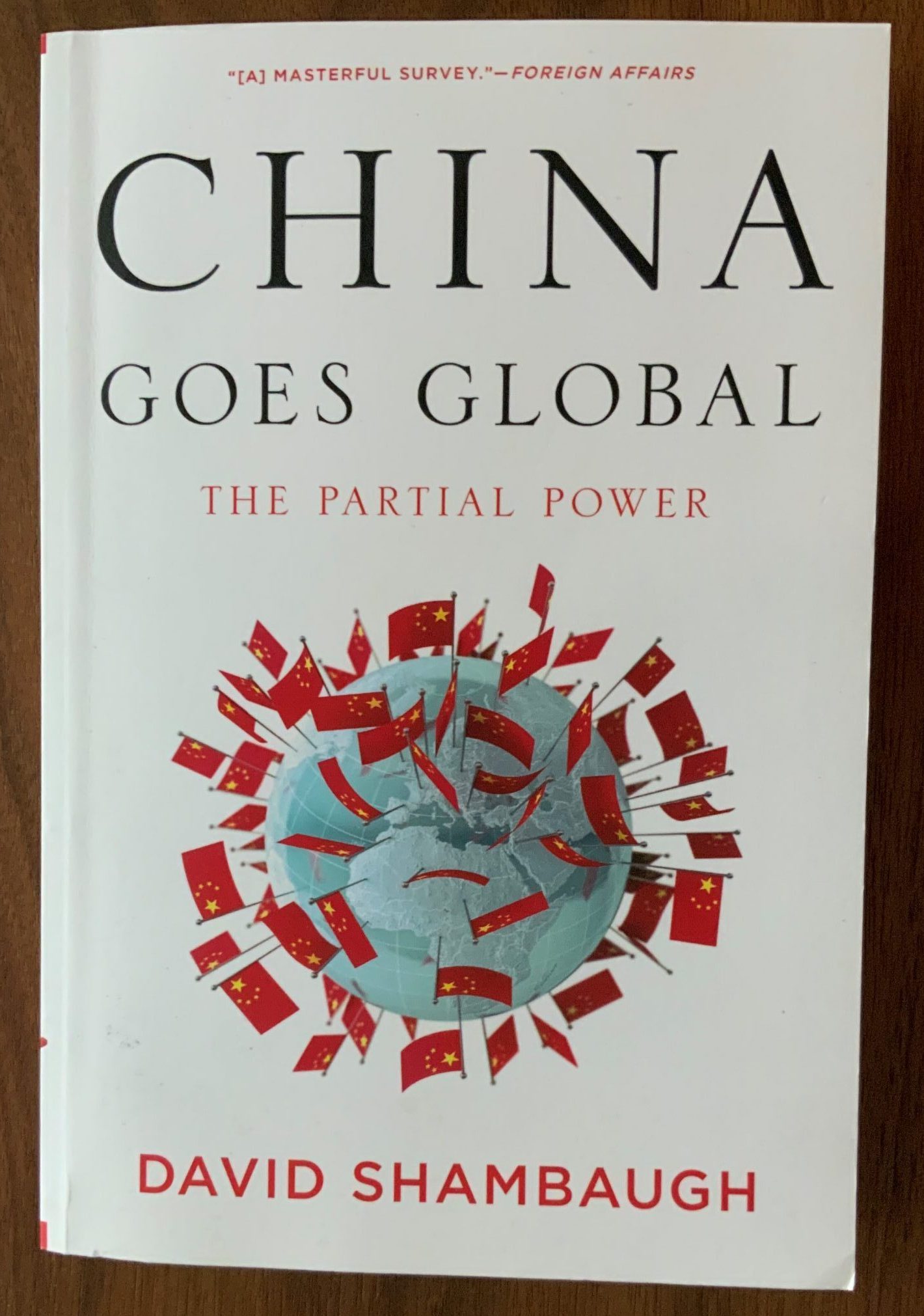China Goes Global is the culmination of a five-year long effort made by David Shambaugh to simplify the impact of China and whether China qualifies as a global superpower by measuring through a comprehensive yardstick comprising of diplomatic, economic, cultural and military sense and its relationship with the rest of the world.
China Goes Global opens up with an analysis into understanding the impact China has had on the world and by laying the groundwork for the author’s main argument, declaring the China is the second leading power and China lacks punch in carrying diplomatic and influential weight in the international realm. The second chapter is a testament to Shambaugh in depth research where he has strived to showcase the global identities of China and naming the divided schools of thought within the homeland with regard to International Relations. In the third chapter, China’s foreign policy process is dissected where it can be categorized into five concentric circles, ranging from highest-level decision makers to common society. While the China’s diplomatic presence is complex, the author effectively breaks down the concepts into a cohesive bite-size pieces. The author goes forward in the next chapter to comment on China and globalisation where China’s problem-solving competence is criticised as China lacks engagement. The following chapter ventures into the economic presence of China and notes the strides the nation has made however declares these achievements meaningless as they fail to translate into any real influence or power. In the sixth chapter, the author sheds light on the cultural presence of China and analyses the potency of the government to influence other countries on soft power. The next chapter deliberates whether China’s military resources are up to par and whether the ramifications that accompany the military expenditure offer China any favours. The author solemnly concludes that in comparison with the United States, China has yet to cross the threshold of a global superpower. As long as China lacks in friends abroad and continues to be passive in institutions of global governance, China is not ready for global leadership.
Shambaugh tackles the overwhelming task of justifying his main argument, why China “has a very long way to go before it becomes – if it ever becomes – a true global power” in eight chapters, exploring the presence and influence exerted by China. The author’s belief that China is not a global superpower but a partial one, circling back to the subtitle of this publication, The Partial Power. According to the author, China having the status of being a ‘partial power’ is justified as China has resources, he claims that are being underutilised. The author illustrates the economic achievements China has but disregards it on the premise that China is not using their cash to wield any power or influence on the rest of the world. The author also posits that China does not make any effort to solve any major global problem.
Perhaps my reservations about this publication began with the initial definition of power chosen by the author, Joseph Nye’s notion, ‘that resources do not constitute power unless they can be used to influence actors or the outcome of a situation’. China’s foreign policy under the reign of Deng Xiaopeng has been to keep a low-profile and then slowly to rise to their former glory and to replenish what they have lost in the ever referenced, Century of Humiliation. Nye’s definition of power seems irrelevant as China’s strategy of foreign policy seems to have defined power as the bullets in the barrel rather than the shots taken. While the book aspires to provide a plenary outlook on the emergence and implications of China, the author contradicts himself and there are holes in the arguments presented that need patching up. While China is said to not have any friends or allies in the region, the recent efforts made by Beijing with the Belt and Road Initiative should be considered along with Asia Infrastructure Bank that is developing the Asian region and boosting the economies of the region as a whole. In the spirit of ‘win-win’ diplomacy, the developing regions in the area have a mutual understanding and respect with China. While condemning China’s lack of adherence to global environmental issues such as global warming is highlighted, Shambaugh’s preferred global power of choice, the United States contributed 13% of the global CO2 emissions in 2019, second highest in the world with the first being China. While many of China’s accomplishments are presented but glossed over, the author strongly contends that Beijing laps behind Washington in the face of global politics. China’s passivity and lack of action in global institutions is criticised heavily as if China cowers in the face of Western might. While these actions are problematic in the international landscape, ethnic assimilation of Uyghur Muslims and the situation in Hong Kong by the Chinese government was met with heavy punitive measures from the Unites States. However, China remained steadfast in the measures taken which is telling as to the aggressive foreign policy China is deploying now. In the face of the sanctions placed, exhibited xenophobia and years of underestimating China, she storms strong, finally finding her ‘place in the sun’.
In conclusion, Shambaugh’s book successfully touches on different areas of global dominance whilst offering fresh perspectives for the academics. The book was well written and researched, providing a great start to those wishing to educate themselves on the subject matter.


